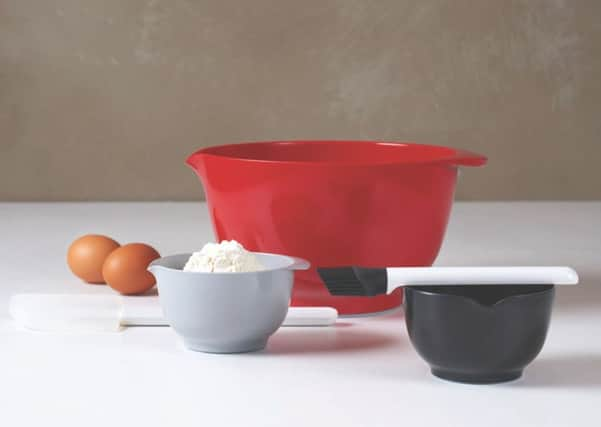Bowled over by a Scandinavian design classic


When we think of the classic designs of the twentieth century, our attention is inevitably drawn to the living room. Perhaps the Eames lounge Chair or Le Corbusier’s chaise longue, Alvar Aalto’s birch stool or his Savoy vase or even Arne Jacobsen’s series 7 chair or Egg armchair.
We probably don’t think of one of Scandinavia’s most ubiquitous designs that is commonly found in the kitchen. It is simple, practical, sturdy and astonishingly elegant and is now 68 years old. But the story of this “Margrethe” bowl began a few years earlier with the friendship of Rolf Fahrenholtz and Stig Jorgensen whose company took the first two letters of their names and merged them into “ROSTI.” This partnership became the first Danish manufacturer of melamine straight after World War II: a new material and an adventurous production challenge.
Advertisement
Hide AdAdvertisement
Hide AdIn 1947, these founders began to quizz housewives and cooks to determine the important features of a mixing bowl. They were told that it must have a lip, a handle, be deep enough for whipping and whisking (remember that electric mixers were then few and far between) and a curved, smooth surface for easy mixing, beating and scraping out. They turned to Sigvard Bernadotte, a son of the king of Sweden and nephew of the queen of Denmark whose daughter was Princess Margrethe. He was an industrial designer who worked with his partner Acton Bjørn andJacob Jensen. They were paid such a small fee that they could only afford to get the design right first time. This they did and the bowl went into production in 1950.
Three years later, the laws of succession in Denmark were changed and the young Princess suddenly hit the news as the heir to the Danish throne. Permission was sought and granted to name the bowl after her and since then it has been known as the “Margrethe” bowl.
The original colours were white (still made today) and pastel yellow, green and blue. By the 1960s, red was introduced and a rubber ring fitted to the base to help it grip any work surface. A member of our family visited Copenhagen then and brought one back: it has been used in regular kitchen duties for three generations and is still going strong - a great testament to a great functional design. But it is not just a mixing bowl: it makes a great salad bowl, a super serving bowl, perfect for popcorn and pretty good as a plant pot or food storage.
Its real strength, however, is its timeless design, practical functionality and its range of sizes from tiny to a generous 4 litre capacity and with the added benefit of clip on lids. A wonderful example of design at its best that has become an icon of mid century homewares at agreeably affordable prices starting at just a couple of pounds and still “under a tenner” for a decent sized mixing bowl. It’s not at all surprising that it is included in the permanent collection of The Museum of Modern Art, New York.
To borrow a 1973 phrase from a well known Danish brewery in the voice of Orson Welles, “The Margrethe bowl is probably the greatest mixing bowl in the world.” Millions of households agree.